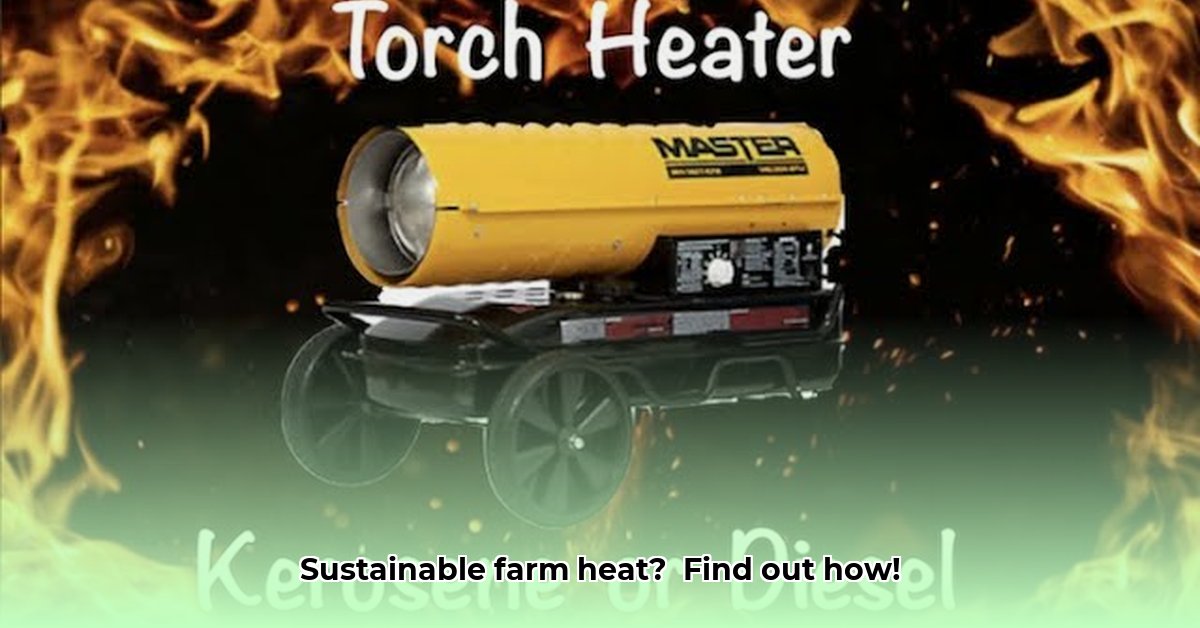
Keeping your farm warm and productive shouldn't break the bank or harm the planet. For years, many farmers have relied on propane heaters, readily available at Tractor Supply, but these traditional methods are becoming increasingly expensive and environmentally unfriendly. For more information on propane heater alternatives, check out this resource. This article explores sustainable heating alternatives, examining the drawbacks of conventional solutions like Master Heater products and showcasing eco-friendly options that benefit both your bottom line and the environment. We'll guide you through selecting and implementing a sustainable heating system for your farm, including resources to secure financial assistance for the transition.
The Hidden Costs of Conventional Farm Heating
Heating barns, greenhouses, and drying crops demands significant energy. Propane heaters, while efficient in the short term, rely on a fossil fuel with volatile prices and a substantial carbon footprint. This isn't simply an environmental concern; it directly impacts your operating costs and contributes to climate change. The true cost of relying on fossil fuels extends far beyond the price of the propane tank itself. Don't you want to minimize your environmental impact while also saving money?
Sustainable Heating: A Greener Path for Your Farm
Fortunately, numerous innovative and practical sustainable heating alternatives are available to farmers. Let's explore leading options transforming sustainable agriculture:
Solar Thermal Systems: These systems convert sunlight into usable heat, reducing energy bills over time. However, initial investment can be high, and effectiveness depends on sunlight availability and location.
Biomass Boilers: Utilizing agricultural waste (wood chips, crop residues) as fuel, these boilers offer a circular economy approach, cutting fossil fuel reliance. However, consistent fuel supply is needed, and emissions management is crucial.
Geothermal Heat Pumps: Geothermal systems harness the earth's stable temperature for heating and cooling, offering consistent performance regardless of weather. While upfront costs are high, long-term energy savings are substantial. However, installation requires specialized expertise and favorable site conditions.
Improved Insulation: A simple, yet powerful approach. Enhanced building insulation dramatically reduces the energy needed to maintain comfortable temperatures, often yielding immediate cost savings and representing an excellent initial step before major system upgrades.
A Comparative Analysis: Sustainable Heating Options for Farms
The best sustainable heating solution depends on your unique circumstances. The following table provides a clearer picture of the advantages and disadvantages of each system:
| Heating System | Advantages | Disadvantages |
|---|---|---|
| Solar Thermal | Clean energy, long-term cost savings, reduced carbon footprint | High initial cost, location-dependent, requires adequate sunlight |
| Biomass Boiler | Uses agricultural waste, reduces fossil fuel reliance | Consistent fuel supply needed, potential emissions, requires management |
| Geothermal Heat Pump | Consistent performance, low operating costs, environmentally friendly | High initial investment, site-specific requirements, complex installation |
| Improved Insulation | Significant energy savings, relatively low cost, easy implementation | May require professional installation for best results |
Your Step-by-Step Guide to Sustainable Farm Heating
Transitioning to sustainable heating is a multi-step process. This roadmap streamlines the journey:
Step 1: Conduct a Comprehensive Energy Audit: Assess your current energy use to pinpoint areas for improvement. Online resources and energy professionals can assist in this crucial initial assessment.
Step 2: Select the Appropriate Technology: Carefully evaluate your farm's needs, climate, and budget. The information above will help you determine which system best aligns with your operational priorities. Seek expert advice if needed.
Step 3: Explore Funding and Incentives: Government agencies and organizations often offer grants and subsidies for sustainable energy projects. Research available programs in your region.
Step 4: Professional Installation and Maintenance: Ensure proper installation and regular maintenance by qualified professionals for optimal system performance and longevity. This proactive approach ensures safety and efficiency.
Conclusion: Investing in a Greener and More Profitable Future
Choosing sustainable heating isn't simply an environmental responsibility; it’s a wise investment. While Master Heater products provide immediate solutions, the long-term costs and environmental impact of fossil fuels are substantial. By embracing sustainable alternatives, you're securing a more profitable and environmentally responsible future for your farm.
Resources
- Link to USDA resources on sustainable agriculture
- Link to EPA resources on energy efficiency
- Link to relevant state/local grant programs
(Note: Replace the example links above with actual, relevant links.)